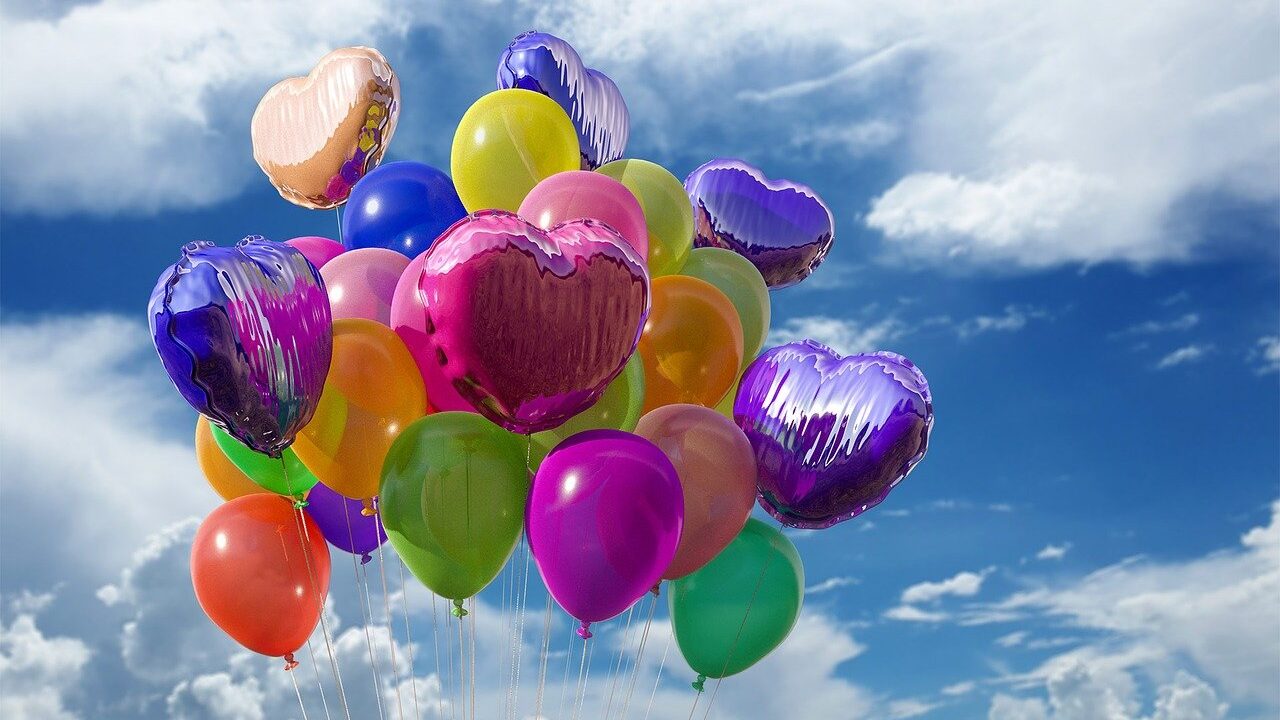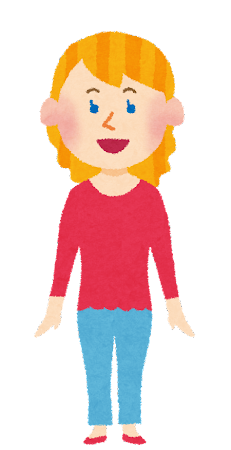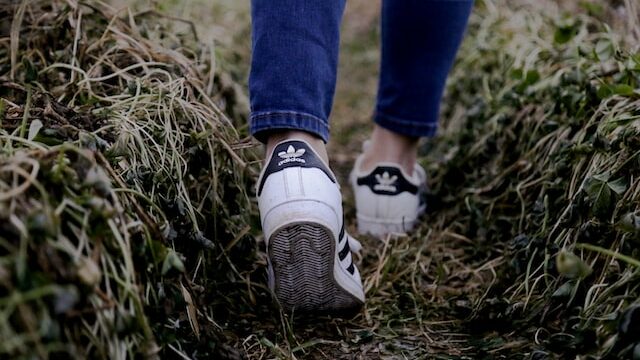ライフハックとしてではなく、英語学習にも極めて有用なのが、著名人が10分程度のプレゼンを行うTEDです。
TED Talksとは、あらゆる分野のエキスパートたちによるプレゼンテーションを無料で視聴できる動画配信サービスのことです。10年ほど前にサービスが開始されてから、政治、心理学、経済、日常生活などの幅広いコンテンツが視聴できることから人気を集めています。
RareJob English Lab
TEDは4000を超える膨大な数の動画があります。しかし慣れないうちは、動画の探し方や視聴のコツが分かりませんよね。この記事では、数多くのTEDを見てきた管理人(塩@saltandshio)が、心を揺さぶられたトークをあらすじと一緒にご紹介します。
ビジネス英会話を効率よく身につけたい方におすすめスクール
シェーン英会話
シェーンは1977年の創業以来、ネイティブ講師が英語を英語で教える「直接教授法」を採用しています。首都圏におけるスクール拠点数は、ネイティブ講師の英会話スクールでNo.1。駅から近いスクールが多いので通いやすく時間を有効に使えます。
スピークバディ パーソナルコーチング
1日1時間の短期集中トレーニングで、あなたの英語力向上をコーチが全力でサポートします。あなたの英語の世界が、劇的に変わります。
イングリッド・フェテル・リー: 喜びはどこに隠れ、どう見付けるか
桜や虹やシャボン玉 ― ある種のものが普遍的な喜びを生み出すように見えるのは、なぜなのでしょう?この心を捉える講演で、イングリッド・フェテル・リーは驚くほど実際的な喜びの起原を明らかにし、どうすれば身の回りにもっと多くの喜びを見つけ、作り出せるのかを示します(約13分半)。
[PR]無料体験レッスン実施中!全国208校、創業40年の老舗英会話スクール【シェーン英会話】どうして物が喜びを感じさせるのか
イングリッド・フェテル・リーはデザイナーを目指していました。彼女が1年間かけて制作した作品を見て、教授のひとりが「君の作品には喜びが感じられるね」とコメントをします。その言葉に、イングリッド・フェテル・リーは大きな疑問を抱きます。なぜなら、彼女は人を喜ばせようとして作品を作ったわけではないからです。そのため、コメントをした教授に質問をしました。
物がどうやって喜びを感じさせるのでしょう?形のある物がどうやって、形のない喜びを生み出すのでしょう?
“How do things make us feel joy? How do tangible things make us feel intangible joy?”
教授はこの質問に対して大変驚きます。しかも、返ってきたコメントはどれも曖昧で、納得する答えをしてくれませんでした。この「形のある物がどうやって、形のない喜びを生み出すのか」という疑問が頭から離れなかったイングリッド・フェテル・リーは、その後10年かけて、物と喜びの関係性を探ることになります。
[PR]まずは無料カウンセリング”続けるため”の オンライン英語コーチ「スピークバディ パーソナルコーチング」喜びはいったいどこから来るのか
物と喜びの関係性を探るうちに、イングリッド・フェテル・リーはある発見をします。
私が発見したのは、2つには繋がりがあるだけでなく、物の世界は幸せで健康な生活の強い源になるということです。
And what I discovered is that not only are they linked, but that the physical world can be a powerful resource to us in creating happier, healthier lives.
そもそも喜びとはなんでしょうか。喜びの定義はあいまいで、科学者たちでさえ意見が異なり、「喜び」や「幸せ」や「ポジティブさ」を同じものとして扱っている場合があります。
一方、心理学者が「喜び」と言うときには、一時的に強いポジティブな感情的経験を意味しています。それは、私たちを笑顔にするもので、笑わせたり、飛び上がりたくなるものです。
それよりも、ここで着目するべきは、私たちの文化は幸せを追い求めることには熱心ですが、その過程である喜びは見落とされがちだということです。
[PR]しちだの魔法ペンなら35日でバイリンガルに!楽天4部門1位の英会話!<七田式>人は同じものに喜びを感じている
イングリッド・フェテル・リーは、様々な人に喜びについて聞いてまわるうちに、ある特定のパターンがあることに気が付きます。シャボン玉や花火、気球やカラフルなアイスクリームのトッピングなど、それらのものが年齢や性別、そして人種やさらに国境を越えて喜びを感じるアイテムとして出てきたのです。
虹が出ていたら、誰でも空を見上げます。花火を見たら、どういうわけかなにかお祝いしている気分になります。それらは、一部の人だけでなく、ほとんどすべての人にとって喜ばしいと感じるものなのです。普遍的な喜びといっていいでしょう。
そのことに気付いたイングリッド・フェテル・リーは、言葉に出来ない希望が胸に溢れます。私たちの世界は政治的に分断され、人々の違いはあまりに大きく乗り越えがたく感じますが、様々な境界線を越えて誰しもが同じものに喜びを感じていたのです。
そうやって見てみると、喜びの感覚は不思議でとらえどころがなくても、形ある物の性質から近づけることに気付きました。デザイナーが言う aesthetic(美的感性)です。その語源は古代ギリシャ語のaisthomaiで、 「私は感じる」、「私は知覚する」という意味です。
これらのパターンは喜びが感覚から始まることを示しているので、私はそれを「喜びの感性」(Aesthetics of Joy)と呼ぶようになりました。
When I saw it this way, I realized that though the feeling of joy is mysterious and elusive, we can access it through tangible, physical attributes, or what designers call aesthetics, a word that comes from the same root as the Greek word “aisthomai,” which means, “I feel,” “I sense,” “I perceive.”
And since these patterns were telling me that joy begins with the senses, I began calling them “Aesthetics of Joy”; the sensations of joy.
またイングリッド・フェテル・リーは、喜びを感じるものにはあるパターンがあることにも気が付きます。それらは丸いもの、飛び出す色鮮やかなもの、対称的な形などです。
[PR]知って得する、知らないと損をする!すぐに役立つ相手に合った「伝え方」のコツ!喜びは身の回りにあふれている。でも……
世の中には「喜びの感性」があちこちに散らばっていることに気が付いたイングリッド・フェテル・リーですが、同時にもうひとつ気が付いたことがあります。私たちが日常を過ごす、家や学校やオフィス、そして病院や療養施設が無機質で四角四面の殺伐とした空間づくりになっていることです。
私たちは、幼い頃は喜びに満ちていました。しかし、歳を追うごとに生き生きとして熱狂することが批判されるようになります。
大人が純粋な喜びを示すと、子供っぽいとか、女々しいとか、不真面目とか、自堕落だなどと言われます。それで私たちは喜びを抑えるようになり、こんな世界に行き着くんです。
でも「喜びの感性」が、世の中に喜びをもっと見付ける役に立つなら、喜びをもっと生み出すためにも使えないでしょうか?
Adults who exhibit genuine joy are often dismissed as childish or too feminine or unserious or self-indulgent, and so we hold ourselves back from joy, and we end up in a world that looks like this.
But if the aesthetics of joy can be used to help us find more joy in the world around us, then couldn’t they also be used to create more joy?
2年間、自らの問いに答えを出すために世界を巡ったイングリッド・フェテル・リーは、東京の三鷹である建物に出会います。芸術作品のような家「三鷹天命反転住宅」です。この建物は、人を若返らせる建物として作られました。
ほかにも、世界中でカラフルな建造物が作られています。そのどれもが、イングリッド・フェテル・リーが感じた気持ちと同じように、殺伐とした空間が人々の感性や心までを潰してしまうことに気付いたアーティストたちが、心に喜びを思い出すために制作したものだったのです。
[PR]しちだの魔法ペンなら35日でバイリンガルに!楽天4部門1位の英会話!<七田式>まとめ:「喜びの感性」を世の中に広めよう
私たちは、とがったものや角ばったものを見ると、恐怖や不安に関わる脳の部位である扁桃体が活性化されます。しかし、丸い物を見たときはそうならないことが分かっています。
私たちは日々幸せを追い求めています。ですが、私たちが幸せを追い求める前にまずするべきことは、喜びの価値を認め、もっと頻繁に喜びに出会えるようにする方法を見付けることではないでしょうか。
喜びは不要で余分なものなんかではありません。深い生存本能に直接根ざしたものです。
最も根本的なレベルにおいて、喜びへの衝動は生への衝動なんです。
Joy isn’t some superfluous extra. It’s directly connected to our fundamental instinct/ for survival.
On the most basic level, the drive toward joy is the drive toward life.
あなたが喜びを感じるものはなんですか?まずは、カラフルなアイスクリームを食べて喜びを思い出してみませんか。
英語全文
It’s 2008, and I’m just finishing my first year of design school. And I’m at my first year-end review, which is a form of ritual torture for design students, where they make you take everything you made over the course of the year and lay it out on a table and stand next to it while a bunch of professors, most of whom you’ve never seen before, give you their unfiltered opinions of it.
<全文を読む>▼クリック▼
Joy? I wanted to be a designer because I wanted to solve real problems. Joy is nice, I guess, but it’s kind of light — not substantial. But I was also kind of intrigued, because joy is this intangible feeling, and how does that come from the stuff on the table next to me? I asked the professors, “How do things make us feel joy? How do tangible things make us feel intangible joy?” They hemmed and hawed and gestured a lot with their hands. “They just do,” they said.
I packed up my things for the summer, but I couldn’t stop thinking about this question … and this launched a journey — one that I didn’t know at the time would take me 10 years — to understand the relationship between the physical world and the mysterious, quixotic emotion we call “joy.” And what I discovered is that not only are they linked, but that the physical world can be a powerful resource to us in creating happier, healthier lives.
After my review, I thought, “I know what joy feels like, but what is it, exactly?” And I found that even scientists don’t always agree, and they sometimes use the words “joy” and “happiness” and “positivity” more or less interchangeably. But broadly speaking, when psychologists use the word joy, what they mean is an intense, momentary experience of positive emotion — one that makes us smile and laugh and feel like we want to jump up and down. And this is actually a technical thing. That feeling of wanting to jump up and down is one of the ways that scientists measure joy. It’s different than happiness, which measures how good we feel over time. Joy is about feeling good in the moment, right now. And this was interesting to me because as a culture, we are obsessed with the pursuit of happiness, and yet in the process, we kind of overlook joy.
So this got me thinking: Where does joy come from? I started asking everyone I knew, and even people I just met on the street, about the things that brought them joy. On the subway, in a cafe, on an airplane, it was, “Hi, nice to meet you. What brings you joy?” I felt like a detective. I was like, “When did you last see it? Who were you with? What color was it? Did anyone else see it?” I was the Nancy Drew of joy.
And after a few months of this, I noticed that there were certain things that started to come up again and again and again. They were things like cherry blossoms and bubbles … swimming pools and tree houses … hot air balloons and googly eyes —
and ice cream cones, especially the ones with the sprinkles. These things seemed to cut across lines of age and gender and ethnicity. I mean, if you think about it, we all stop and turn our heads to the sky when the multicolored arc of a rainbow streaks across it. And fireworks — we don’t even need to know what they’re for, and we feel like we’re celebrating, too. These things aren’t joyful for just a few people; they’re joyful for nearly everyone. They’re universally joyful. And seeing them all together, it gave me this indescribably hopeful feeling. The sharply divided, politically polarized world we live in sometimes has the effect of making our differences feel so vast as to be insurmountable. And yet underneath it all, there’s a part of each of us that finds joy in the same things. And though we’re often told that these are just passing pleasures, in fact, they’re really important, because they remind us of the shared humanity we find in our common experience of the physical world.
But I still needed to know: What is it about these things that makes them so joyful? I had pictures of them up on my studio wall, and every day, I would come in and try to make sense of it. And then one day, something just clicked. I saw all these patterns: round things … pops of bright color … symmetrical shapes … a sense of abundance and multiplicity … a feeling of lightness or elevation. When I saw it this way, I realized that though the feeling of joy is mysterious and elusive, we can access it through tangible, physical attributes, or what designers call aesthetics, a word that comes from the same root as the Greek word “aisthomai,” which means, “I feel,” “I sense,” “I perceive.” And since these patterns were telling me that joy begins with the senses, I began calling them “Aesthetics of Joy”; the sensations of joy. And in the wake of this discovery, I noticed something that as I walked around, I began spotting little moments of joy everywhere I went — a vintage yellow car or a clever piece of street art. It was like I had a pair of rose-colored glasses, and now that I knew what to look for, I was seeing it everywhere. It was like these little moments of joy were hidden in plain sight.
And at the same time, I had another realization, that if these are the things that bring us joy, then why does so much of the world look like this?
Why do we go to work here? Why do we send our kids to schools that look like this? Why do our cities look like this? And this is most acute for the places that house the people that are most vulnerable among us: nursing homes, hospitals, homeless shelters, housing projects. How did we end up in a world that looks like this?
We all start out joyful, but as we get older, being colorful or exuberant opens us up to judgment. Adults who exhibit genuine joy are often dismissed as childish or too feminine or unserious or self-indulgent, and so we hold ourselves back from joy, and we end up in a world that looks like this.
But if the aesthetics of joy can be used to help us find more joy in the world around us, then couldn’t they also be used to create more joy? I spent that last two years scouring the planet, looking for different ways that people have answered this question. And this led me to the work of the artist Arakawa and the poet Madeline Gins, who believed that these kinds of environments are literally killing us. And so they set out the create an apartment building that they believed would reverse aging. And this is it.
It’s a real place, just outside Tokyo. I spent a night there, and it’s a lot.
The floors undulate, so you don’t end up walking around so much as kind of bouncing around the apartment, and there are bright colors in every direction. I’m not sure I left any younger, but it’s as if, by trying to create an apartment that would make us feel youthful, they ended up creating one that was joyful. And yes, this is a bit much for everyday life, but it made me wonder: What about the rest of us? How do we bring these ideas back into the real world?
So I started finding people who were doing just that. For example, this hospital, designed by the Danish artist Poul Gernes. Or these schools, transformed by the non-profit Publicolor. What’s interesting is that Publicolor has heard from school administrators who say that attendance improves, graffiti disappears and kids actually say they feel safer in these painted schools. And this aligns with research conducted in four countries, which shows that people working in more colorful offices are actually more alert, more confident and friendlier than those working in drab spaces.
Why would this be the case? Well, as I started to trace back our love of color, I found that some researchers see a connection to our evolution. Color, in a very primal way, is a sign of life, a sign of energy. And the same is true of abundance. We evolved in a world where scarcity is dangerous, and abundance meant survival. So,one confetto — which happens to be the singular of confetti, in case you were wondering —
isn’t very joyful, but multiply it, and you have a handful of one of the most joyful substances on the planet. The architect Emmanuelle Moureaux uses this idea in her work a lot. This is a nursing home she designed, where she uses these multicolored spheres to create a feeling of abundance. And what about all those round things I noticed? Well, it turns out neuroscientists have studied this, too. They put people into fMRI machines, and they showed them pictures of angular objects and round ones. And what they found is that the amygdala, a part of the brain associated in part with fear and anxiety, lit up when people looked at angular objects, but not when they looked at the round ones. They speculate that because angles in nature are often associated with objects that might be dangerous to us, that we evolved an unconscious sense of caution around these shapes, whereas curves set us at ease.
You can see this in action in the new Sandy Hook Elementary School. After the mass shooting there in 2012, the architects Svigals + Partners knew that they needed to create a building that was secure, but they wanted to create one that was joyful, and so they filled it with curves. There are waves running along the side of the building, and these squiggly canopies over the entryway, and the whole building bends toward the entrance in a welcoming gesture.
Each moment of joy is small, but over time, they add up to more than the sum of their parts. And so maybe instead of chasing after happiness, what we should be doing is embracing joy and finding ways to put ourselves in the path of it more often. Deep within us, we all have this impulse to seek out joy in our surroundings. And we have it for a reason. Joy isn’t some superfluous extra. It’s directly connected to our fundamental instinct for survival. On the most basic level, the drive toward joy is the drive toward life.
Thank you.
<閉じる>
\ ほかにも気になるトークが満載! /








